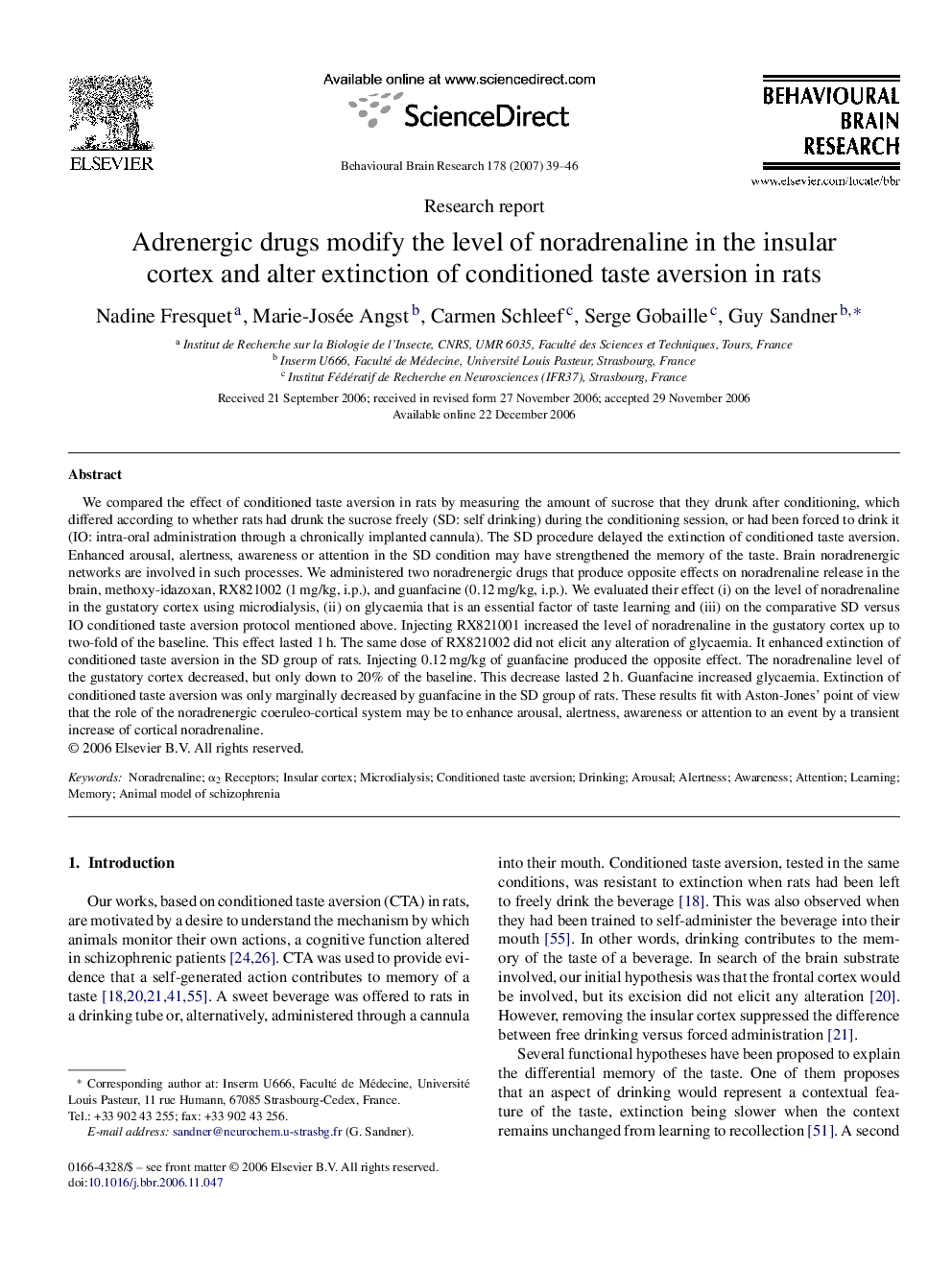| Article ID | Journal | Published Year | Pages | File Type |
|---|---|---|---|---|
| 4315868 | Behavioural Brain Research | 2007 | 8 Pages |
We compared the effect of conditioned taste aversion in rats by measuring the amount of sucrose that they drunk after conditioning, which differed according to whether rats had drunk the sucrose freely (SD: self drinking) during the conditioning session, or had been forced to drink it (IO: intra-oral administration through a chronically implanted cannula). The SD procedure delayed the extinction of conditioned taste aversion. Enhanced arousal, alertness, awareness or attention in the SD condition may have strengthened the memory of the taste. Brain noradrenergic networks are involved in such processes. We administered two noradrenergic drugs that produce opposite effects on noradrenaline release in the brain, methoxy-idazoxan, RX821002 (1 mg/kg, i.p.), and guanfacine (0.12 mg/kg, i.p.). We evaluated their effect (i) on the level of noradrenaline in the gustatory cortex using microdialysis, (ii) on glycaemia that is an essential factor of taste learning and (iii) on the comparative SD versus IO conditioned taste aversion protocol mentioned above. Injecting RX821001 increased the level of noradrenaline in the gustatory cortex up to two-fold of the baseline. This effect lasted 1 h. The same dose of RX821002 did not elicit any alteration of glycaemia. It enhanced extinction of conditioned taste aversion in the SD group of rats. Injecting 0.12 mg/kg of guanfacine produced the opposite effect. The noradrenaline level of the gustatory cortex decreased, but only down to 20% of the baseline. This decrease lasted 2 h. Guanfacine increased glycaemia. Extinction of conditioned taste aversion was only marginally decreased by guanfacine in the SD group of rats. These results fit with Aston-Jones’ point of view that the role of the noradrenergic coeruleo-cortical system may be to enhance arousal, alertness, awareness or attention to an event by a transient increase of cortical noradrenaline.
